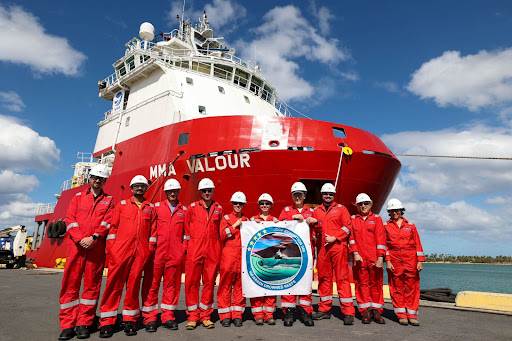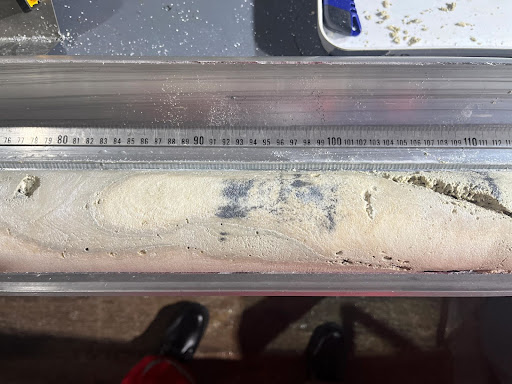Campus News
Scientists use Hawaiian fossils to study the past and future of climate change
This month, an international team of researchers returned to shore after a two-month-long ocean expedition exploring fossil coral reefs off the coast of Hawai’i. The fossils provide a record of past climate conditions, so scientists are using them to learn about environmental changes throughout geologic history and make predictions about the future.


This month, an international team of researchers returned to shore after a two-month-long ocean expedition exploring fossil coral reefs off the coast of Hawai’i. The fossils provide a record of past climate conditions, so scientists are using them to learn about environmental changes throughout geologic history and make predictions about the future.
The project, called IODP Expedition 389: Hawaiian Drowned Reefs, is part of the International Ocean Discovery Program and includes 29 scientists from Australia, Austria, China, Denmark, France, Germany, India, Japan, the Netherlands, Great Britain and the United States. Ten of the scientists have spent the last two months aboard the MMA VALOUR collecting cores from the seafloor.
The researchers collect cores from the seafloor that are about seven centimeters in diameter and a maximum of 75 meters long. They are focusing on 14 drill sites at depths between 130 and 1,150 meters. Researchers use underwater mapping and cameras to choose coring locations that will not disturb life on the seafloor.
The cores will be CT scanned and described in detail once the expedition ends. After that, the IODP team will have a one-year moratorium period to work with the data before it becomes public. All the data from the expedition will be open access.
Christina Ravelo, an ocean sciences professor at the University of California Santa Cruz, is a co-chief scientist on the project. She’s been working on the night shift — from midnight to noon — and will use the cores to research climate variability at the local and global scales.
“Hawaii is in the middle of the subtropical Pacific, where we have almost no data to help us understand how it changed during past intervals of global warmth and during global transitions,” she said. “Knowing how the subtropical Pacific changed will allow us to understand environmental controls on coral reef ecosystems and on large scale climate phenomenon that affect conditions across the globe.”
The researchers have faced some technical challenges, but sampling has gone well overall, says Ravelo. The researchers have found sections of well-preserved fossil corals, and some reveal exciting new mysteries that will require detailed follow-up.
“There’s nothing like opening up the cores that we have drilled to see what is there,” said Ravelo. “Those moments when we know we have the materials to answer our scientific questions are the most exciting.”
Corals are sensitive to environmental changes and record external events in their growth — similar to how tree rings record changes in precipitation. The researchers will identify types of corals and their ages in the cores and use the data to reconstruct sea level changes and other climatic events.
“We hope that information recorded in the fossil reefs will help scientists make improved predictions about the rate and magnitude of sea-level rise, what impact global warming and cooling has on short-term climate phenomena like droughts, floods and marine heat waves, and coral reef ecosystems respond to these changes,” said the other co-chief scientist, University of Sydney, Australia Geosciences Professor Jody Webster, in a recent press release.
The team of scientists will meet at the University of Bremen in Germany this February to split, analyze and sample the cores. After the researchers have the samples, Ravelo expects it will take one to two years before publishing results.
“It will take a lot of careful analytical work to really understand what these rocks are telling us,” she said. “And with this type of science, there are always surprises.”